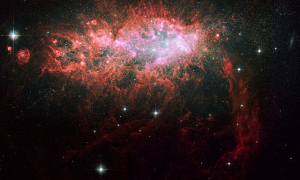MONDAY, 31 OCTOBER 2011
In order to study the way dark matter behaves, cosmologists run simulations using powerful computers. These simulations predict that dark matter should be more densely packed in the centres of galaxies. However, recent measurements of two dwarf galaxies by Matt Walker (Harvard-Smithsonian Center for Astrophysics) and Jorge Peñarrubia (Cambridge University) have shown instead that the dark matter distribution within the two galaxies is actually uniform. This puzzling observation suggests that the standard cosmological model used by astronomers could be wrong.Dwarf galaxies are ideal “subjects” for astronomers interested in dark matter because they typically contain at most 10 million stars, as opposed to the 400 billion in the Milky Way. In addition, dwarf galaxies are composed of up to 99 percent dark matter. To help explain these new findings, it has been suggested that normal matter (for example, stars) might cause dark matter to spread out, but current simulations do not allow for this in dwarf galaxies. Another possibility is that dark matter particles move faster than previously expected (i.e., that dark matter is not “cold”).
Either way, there is a strong need for theorists to modify the standard cosmological model in order to accommodate the new discovery. The team now plans to study more dwarf galaxies in the hope of finding out which (if either) of the two hypotheses is correct.
Written by Javier Azpiroz-Korban

